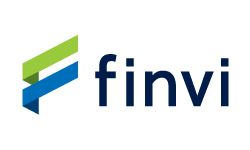Source: site

Several fintech groups held a virtual town hall event last week on the CFPB’s Section 1033 rule. While the conversation centered around the need for a competitive banking system, the importance of innovation and the benefits of safe and secure financial data sharing – all positions that banks and fintechs can agree on – the mixed messaging from the fintech industry may have left some with more questions than answers.
But also, competition is bad. “Just like with the airwaves. You can’t have 10,000 carriers in America. We don’t have enough bandwidth for that. Doesn’t make sense.” – Alex Rampell, a16z
America is one of the most competitive banking systems in the world, and banks support competition. A robust and competitive data-sharing environment already exists in the U.S., represented by more than 4,000 banks and credit unions and over 10,000 fintech companies. Consumers are capable of accessing their favorite apps and services today as a result of bank-led investments.
But also, banks are undermining data-sharing. “[T]he banks are fighting to maintain their data monopoly here.” – Garry Tan, Y Combinator
Private sector innovation has led to the establishment of over 120 data aggregators offering secure access to hundreds of millions of bank accounts, made possible by the voluntary development of secure ways to share consumer data through initiatives like the Financial Data Exchange. FDX’s 50% year-over-year increase in secure linked consumer accounts highlights the success of the industry-led innovation in the consumer-permissioned data sharing ecosystem.
Banks also invest heavily in partnerships with fintech companies. Just this year, partnerships were established between Truist Financial and Pollinate and JPMorgan Chase and Plaid, just to name a few. Data-sharing agreements governing many of these relationships have enabled this competitive ecosystem to thrive by clearly defining costs, outlining who is responsible to the customer when something goes wrong, and addressing unsafe data-collection practices like screen scraping to help keep customers safe.
But also, banks’ concerns are misguided. “[Banks are] doing this in the name of fees. They’re doing this with fees in the name of consumer protection, but in trying to do that, what they’re doing is preventing consumers from accessing their own information held with the banks.” – Former Rep. Patrick McHenry, Senior Advisor at a16z
Banks and credit unions do not charge their customers to access their data, nor do they prevent customers from accessing their data. This is not a simple case of a consumer exporting their own transaction history or account information — a limited, low-cost interaction. Instead, it involves continuous, large-scale data extraction by third-party middlemen, often occurring without the customer’s knowledge, intent on saving, repackaging, and reselling sensitive personal financial data. JPMorgan Chase, for example, received over 1.89 billion data requests in a single month from data aggregators, according to CNBC. Only 13% of those requests were initiated by a customer, and roughly half the requests were from a single aggregator. The CNBC report also found that transactions involving data middlemen were much more likely to result in fraud.
API pricing is based on the volume of data calls, consistent with the business practices of every major data aggregator and technology company, including Plaid, Amazon Web Services, Microsoft Azure, X, Google, and others. Companies like YouTube – specifically mentioned during the discussion – operate API calls on a quota system and generate revenue from advertising and a premium subscription model.
But also, investments in efforts to improve the efficiency and security of data-sharing will kill innovation. “[A]ll that innovation, all those American jobs, all those consumer benefits, they disappear, if banks can gatekeep here.” – Garry Tan, Y Combinator
The banking sector invests heavily in digital infrastructure and technological capabilities to expand the products and services available to customers and to increase the speed, safety and efficiency of modern banking. A McKinsey study found that banks spend about $650 billion per year on IT, or about 6-12% of total annual revenue. That’s nearly double the amount spent by other industries, such as telecommunications and media. These investments generate jobs, encourage innovation and benefit consumers – as evidenced by the proliferation of fintech providers in the U.S.



